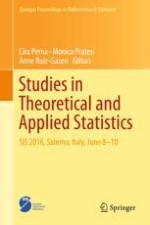This book includes a wide selection of the papers presented at the 48th Scientific Meeting of the Italian Statistical Society (SIS2016), held in Salerno on 8-10 June 2016. Covering a wide variety of topics ranging from modern data sources and survey design issues to measuring sustainable development, it provides a comprehensive overview of the current Italian scientific research in the fields of open data and big data in public administration and official statistics, survey sampling, ordinal and symbolic data, statistical models and methods for network data, time series forecasting, spatial analysis, environmental statistics, economic and financial data analysis, statistics in the education system, and sustainable development. Intended for researchers interested in theoretical and empirical issues, this volume provides interesting starting points for further research.
